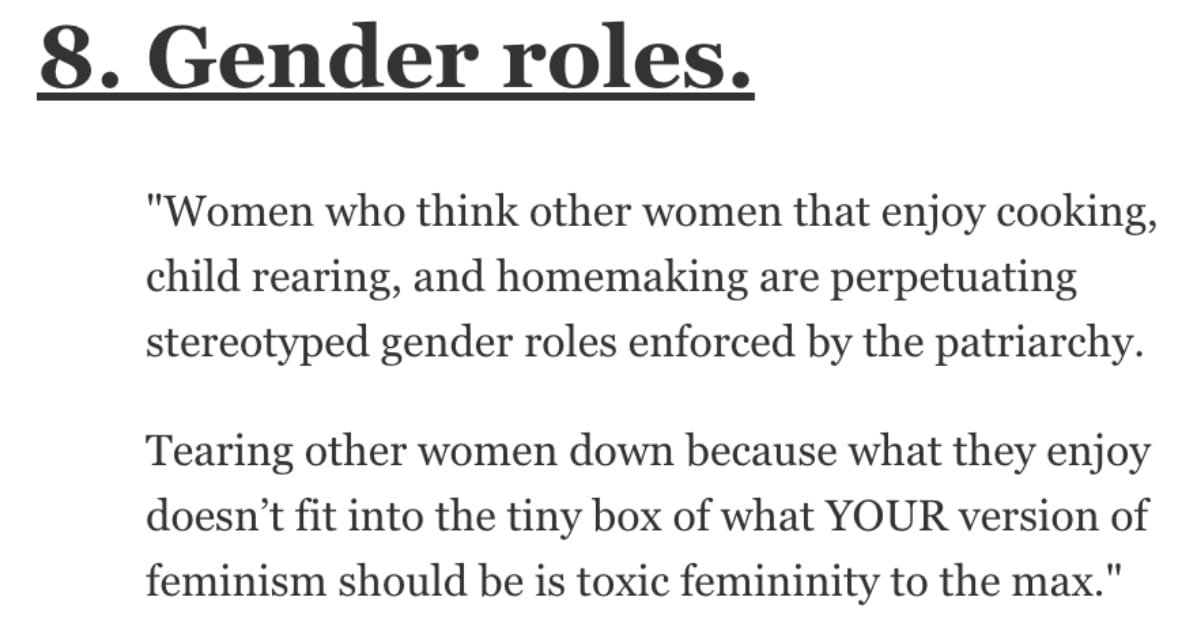Decoding Toxic Femininity: What You Need To Know
Is the pressure to conform to rigid expectations of womanhood truly liberating, or is it a cage built of societal expectations? Toxic femininity, a complex and often misunderstood concept, reveals a hidden dimension of gender-based constraints that can be just as damaging as its better-known counterpart, toxic masculinity.
The term "toxic femininity" is not new, though its widespread recognition is. It entered the cultural lexicon as a response to discussions surrounding toxic masculinity, reflecting a growing awareness of the insidious ways gender norms can negatively impact individuals, regardless of their gender identity. Weber's definition encapsulates this perfectly: it's a code of conformity and social pressure to conform to feminine gender roles, which are often reinforced through unconscious beliefs and the pressure to be consistently pleasant, accommodating, and compliant. These expectations, while appearing harmless on the surface, can create a suffocating environment where women feel compelled to suppress their true selves.
The concept is multifaceted. While toxic masculinity dictates that men should be unemotional and assertive, toxic femininity pressures women to embody traits of being quiet, nurturing, submissive, and attractive. This can manifest in subtle ways, from the pressure to always be agreeable to the expectation of prioritizing others' needs above one's own. The core of the issue lies in the objectification of women, where their worth is often tied to their appearance, their ability to please others, and their adherence to conventional expectations.
| Aspect | Details |
|---|---|
| Definition | A set of behaviors, attitudes, and expectations associated with traditional feminine stereotypes that, when distorted, can negatively impact individuals and relationships. |
| Key Characteristics |
|
| Impact |
|
| Examples |
|
| Origins | The term gained prominence in response to discussions around toxic masculinity, highlighting the negative impacts of rigidly enforced gender roles. |
| Criticism | Some argue the term is too broad and risks oversimplifying the complexities of gender dynamics. |
| Recognizing and Addressing |
|
For reference you can visit Verywell Mind.
Devon Price, a psychologist and author, aptly describes the impact of toxic femininity, as illustrated in a 2018 Medium post titled "Toxic Femininity Holds All of Us Back." Price notes that the insidious nature of these expectations can affect everyone, regardless of gender. The resulting behaviors can be just as damaging as those associated with toxic masculinity.
The core of toxic femininity often lies in a shallow definition of womanhood, where women are objectified and their worth is measured against superficial standards. This perspective restricts women, pushing them towards cooperation, passivity, and sexual submissiveness. Furthermore, it emphasizes physical beauty as a primary source of value, demanding that women be pleasing to men. The result is a cycle of self-doubt, insecurity, and competition among women. It's a social construct that fuels negative emotions and behaviors.
The pervasiveness of these behaviors is highlighted in popular culture, where we see them in films such as "Bride Wars" or "Mean Girls," where female characters often harm each other through intrigue, often fueled by envy. The "femme fatale" archetype exemplifies this a woman who uses her charm and beauty to manipulate and control others, particularly men. It is worth noting that toxic female behaviors often tend to be covert, making them more difficult to identify.
This is where the conversation shifts from simply observing these behaviors to actively challenging them. Self-awareness is the first step. Understanding how one's personality traits might contribute to these patterns is crucial. This includes recognizing when seemingly innocuous behaviorssuch as constant people-pleasing, excessive emotional reactivity, or engaging in gossipmay actually be contributing to the problem. It's about critically examining the cultural messages that have shaped our understanding of what it means to be a woman.
The contrast between toxic masculinity and toxic femininity is noteworthy. While toxic masculinity has maintained a relatively consistent meaning over three decades, the concept of toxic femininity is newer and evolving. This difference stems from the way society has historically addressed gender roles. The conversations around toxic masculinity often focus on behaviors that are intentionally harmful, while toxic femininity manifests in more subtle ways. Both are harmful. Both are prevalent. Both affect us all.
The prevalence of these harmful stereotypes can be seen in the way women interact with each other. Toxic femininity is sometimes described as women shaming men for being "too soft" or failing to live up to a limited definition of masculinity. There is a tendency to focus on aggression and backstabbing to get ahead. This is driven by insecurity, anger, and a desire for control. This is often masked by a socially acceptable facade.
It is essential to recognize and address toxic femininity. One of the keys is self-awareness, understanding the specific behaviors, and the motivation behind them. Furthermore, men need to identify the signs of toxic femininity in their interactions with women, which can promote healthier relationships. Some languages also gender nouns, and the inherent gender bias in language can contribute to the problem.
The conversation surrounding toxic femininity is not about blaming women. It is about analyzing how rigid expectations of femininity harm individuals. Toxic femininity, like toxic masculinity, is not about individuals; rather, it's about recognizing the patterns and pressures that can emerge from societal conditioning and the expectations imposed on all people.
The creation of tools like "toxic femininity tests," and tests based on archetypes from popular culture, such as the one at IDR Labs, can provide insights into the manifestation of these patterns, and can help in self-assessment. While tests can be interesting, it's important to use them as a starting point, and not as a definitive judgment.
It is a critical step to look beyond the surface, recognizing the deep-rooted causes of these behaviors, and taking proactive steps to promote a more equitable and supportive environment for all.


